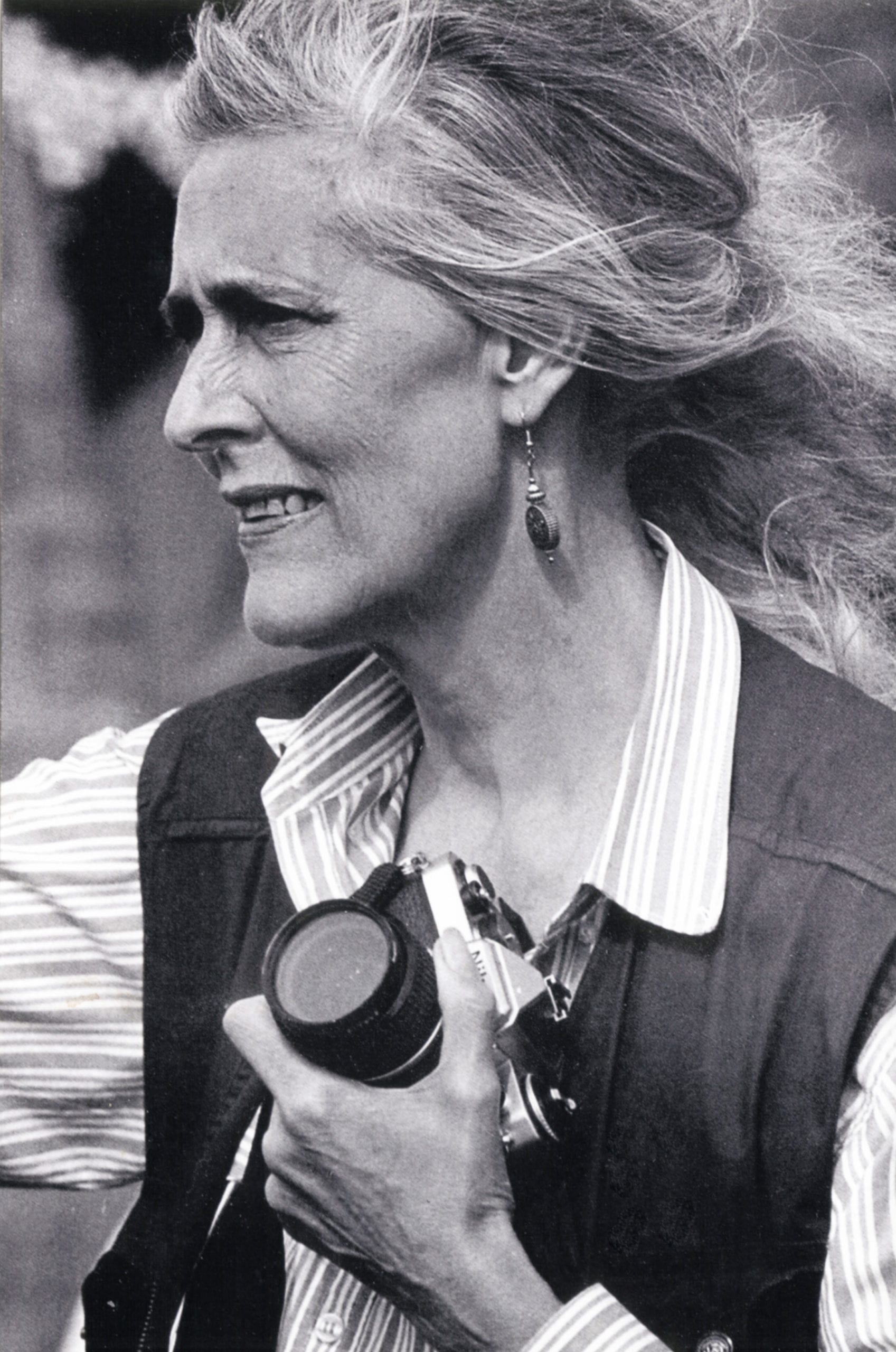By her teens, Robertson knew she did not want the conventional life of a typical young woman from her background. As she later wrote: “If you were a middle-class girl there were [only] three jobs [considered by society as appropriate] – teaching, secretarial work or nursing, just to fill in until you got your man.” She left school early to help care for her mother, who was living with rheumatoid arthritis, and worried she would not be able to get a job or marry. But a chance observation while queuing at a shop proved enlightening, and directed the young Robertson towards a new career. She recalled, “I was standing watching two women talking, it was drizzling, and a bike had fallen over. And suddenly this butcher, whom I loathed, became a picture.”
Although there were a small number of notable women photojournalists active at the time – including Lee Miller, Margaret Bourke-White, Dickey Chapelle, Thérèse Bonney and Sabine Weiss – it was still generally considered to be a male occupation. But Robertson’s father was encouraging when she told him about her interest in the metier, and offered support by buying her a Leica. She began by submitting her work to Picture Post under a male pseudonym, Dick Muir (utilising her mother’s maiden name), which was met with a disheartening response: “Persevere, young man,” was the message on the rejection slip. Persevere she did with the assumed name, but was soon being offered assignments under her own.
In 1951, her series A Schoolgirl Does Her Homework, featuring her sister, was finally published in the magazine. The same year, she received her first commission, what she called her “idyllic” project, to record the work and lives of Welsh sheep-shearers on a hill farm in Snowdonia. A year later, she took on an assignment whose subject would characterise the rest of her career. It was to document the lives of a group of women, a well-known dance troupe of Parisian cabaret called the Bluebell Girls, on their tour to Italy. She later wrote: “I felt I was an observer of society. I never thought about my presence in it. My driving force in photographing women was to find out what made them tick.”
